John Bishop used foundation of a tough beginning
and a life-threatening injury
to co-found influential Living Hope Church
More than 14,000 worshippers filled Portland’s Rose Garden arena on Easter Sunday 2007. Traffic backed up on Interstate 5. About 700 people were baptized in four above-ground swimming pools. T-shirts were launched from air cannons, and a blimp flew overhead dropping more swag.
The mastermind of the unconventional service, Vancouver pastor John Bishop, was at the top of his game.
“The message is entitled, ‘The Worst Day of Your Life,’ ” Bishop told a television news reporter, dispatched to cover the massive worship service. “And we’re just talking about what would your worst day look like — from a perspective of eternity — what would that look like? And how do you go from a worst to a best day?”
Enlarge
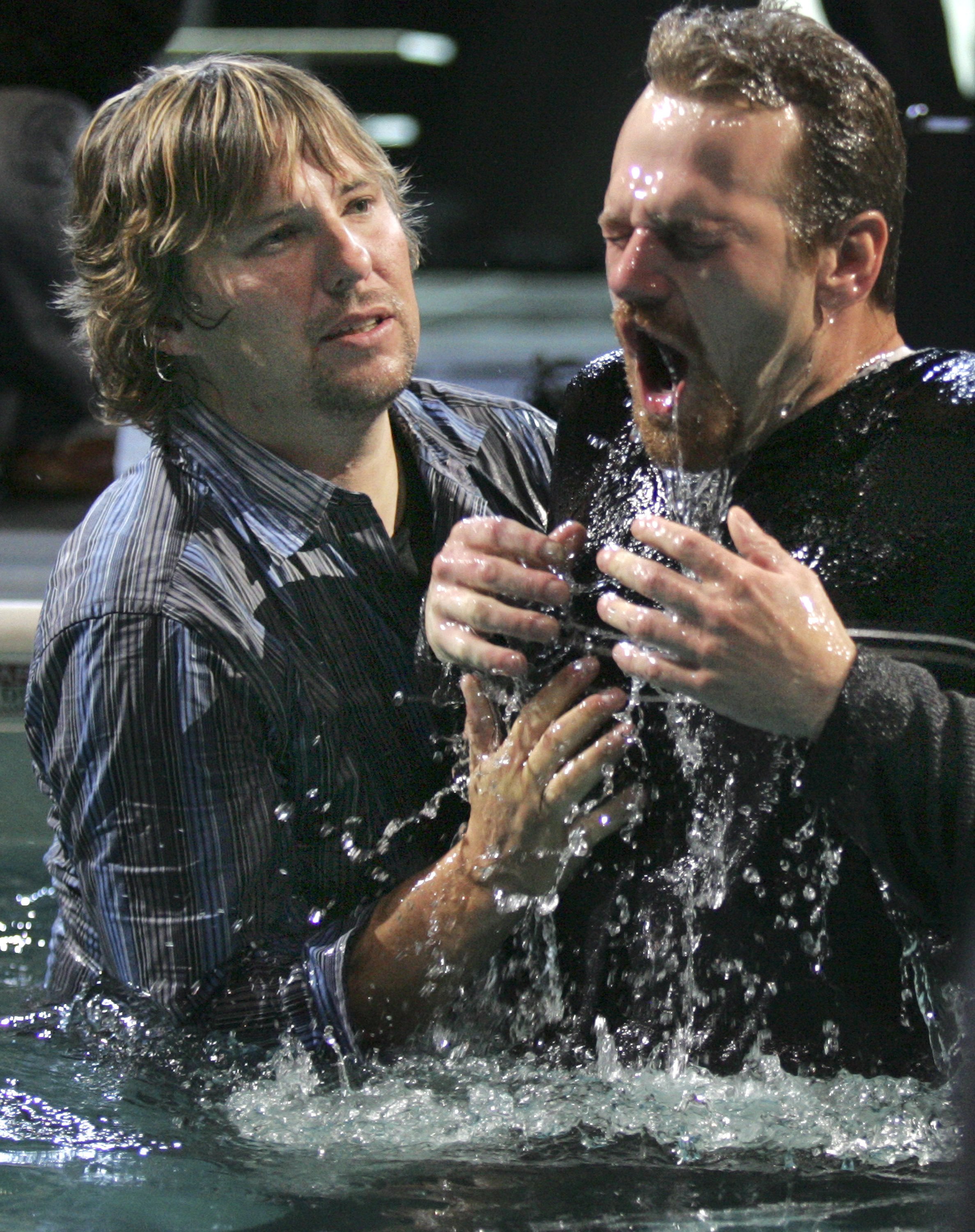
Associated Press files
It’s a question the charismatic, and at times controversial, founder of Living Hope Church has been pondering for the last nine months.
On Dec. 11, U.S. Customs and Border Protection agents stopped Bishop at the California-Mexico border as he tried to smuggle nearly 300 pounds of marijuana into the country.
He pleaded guilty in February to unlawful importation of a controlled substance-marijuana. His sentencing hearing was postponed three times, but a federal judge is set to hand down Bishop’s fate Friday.
Over the next six days, The Columbian will follow the life and lessons of Bishop, a man who grew up in Clark County and found God as a young adult. Bishop is no longer a pastor and doesn’t live in this area anymore, but his actions have deeply impacted the community, the church and his thousands of followers.
As allegations came to light of moral indiscretions, financial issues for the church and for Bishop, and the crime that led to his conviction, the once-successful pastor fell further and further from grace.
All the while, questions remained. Who is this man? And what led him from the pulpit to the defendant’s table at a federal courthouse?
Rough childhood
Bishop and his published books shed some light on his tumultuous early life.
Bishop was born in San Francisco on Feb. 13, 1963, and raised in the Pacific Northwest. He and his younger brother, Ronald, were raised by a single mother in Clark County. Their father, David Lee Bishop, died Feb. 17, 1967, just after John turned 4, in an apparent drunken-driving crash.
His parents had divorced several months prior, and his father had remarried.
According to Columbian archives, 24-year-old David Bishop was driving with a passenger about 6:20 p.m. when he lost control of his vehicle and struck a tree near Ellsworth Road. Both men were killed.
Enlarge
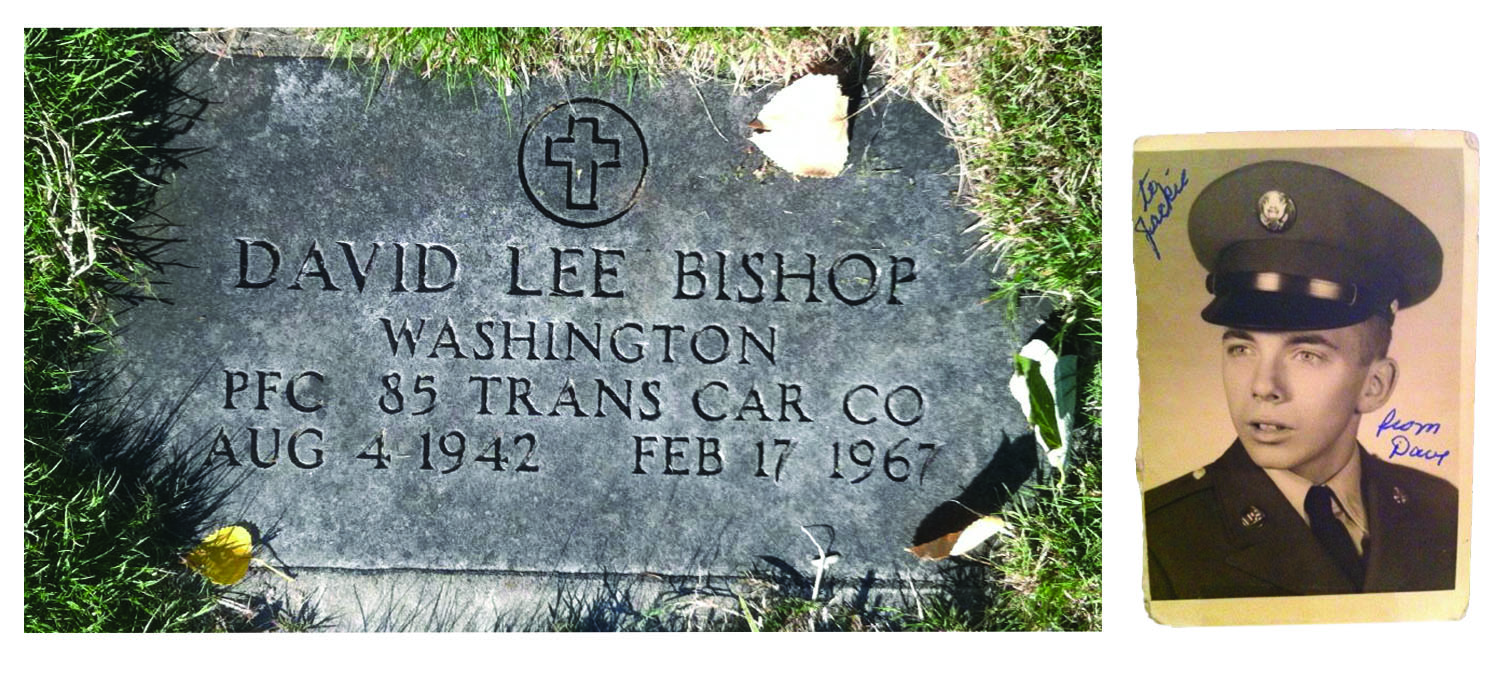
In John Bishop’s 2013 book, “God Distorted,” he wrote that he barely remembers his father — a machinery operator for SP&S Railway who also served in the Army.
Bishop wrote his father had been drinking when he crashed his Chevrolet Corvair. Police reportedly found more than 20 empty beer cans in the car.
Bishop’s loss led to abandonment and father issues that would later affect his own family, he wrote.
Eighteen months after his father died, Bishop’s mother married a physically, emotionally and verbally abusive man, he wrote. Bishop recalled a time as a young child when his stepfather shoved his head into a toilet.
After the marriage collapsed, Bishop’s mother moved the family into her parents’ house. He shared a close bond with his grandfather, whom he called Pop or Papa, and he became his father figure, Bishop wrote.
Bishop was an angry teenager. He got into trouble, and was suspended from both middle and high school. He even spent a stint in juvenile detention, he wrote.
Enlarge
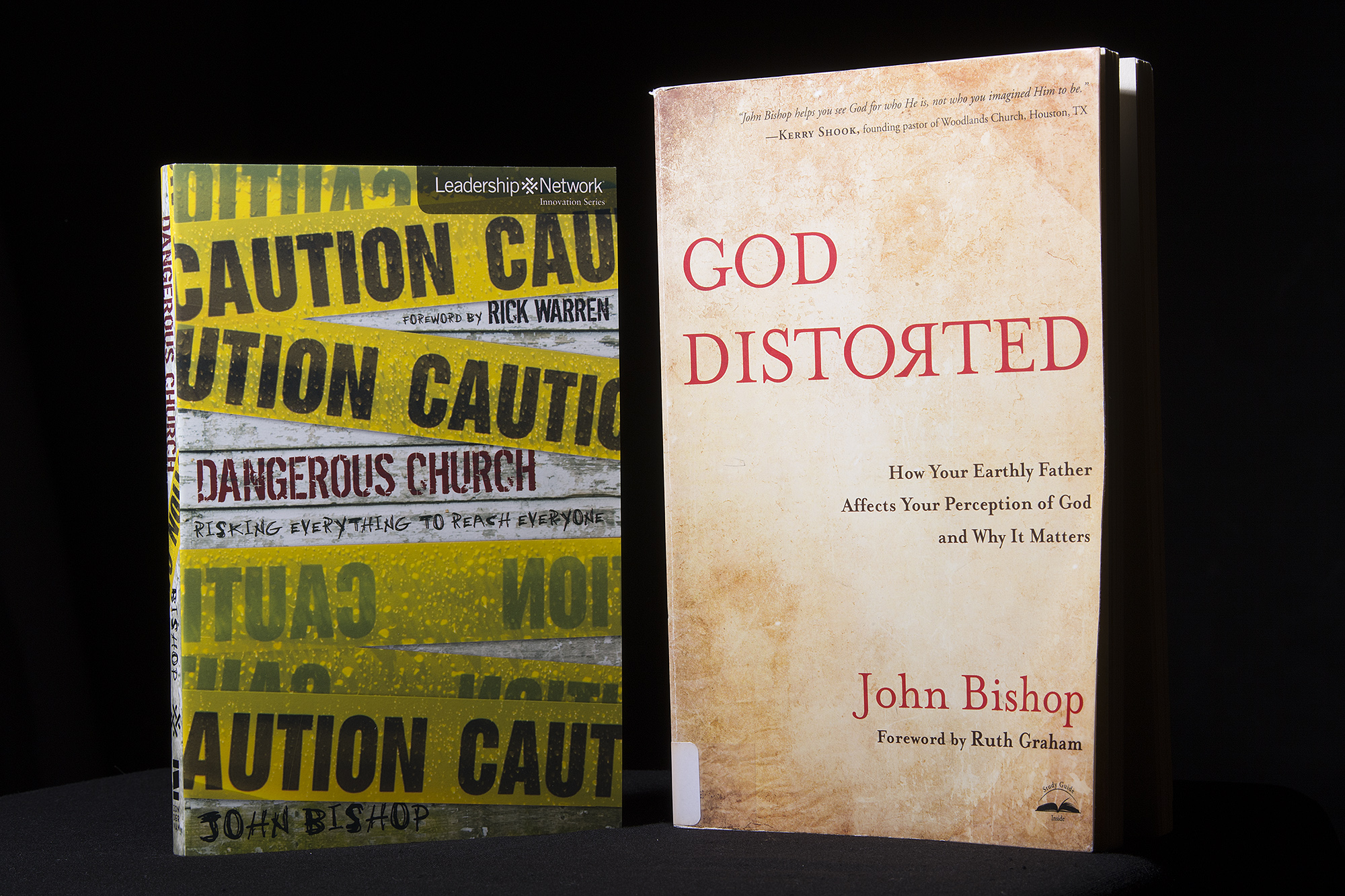
Amanda Cowan/The Columbian
He was more a class clown than a fighter, Bishop told The Columbian in a recent phone interview.
“I was the guy if someone was picking on someone, I would step into the middle of that fight. It was an injustice thing for me,” he said.
He graduated in June 1981 from Hudson’s Bay High School, along with friends Dave “Davy” Clinton and Brett Wilkerson, who would later help him start Living Hope Church. Clinton declined to be interviewed for this story; Wilkerson did not return messages requesting an interview.
Bishop’s future wife, Michelle Shaw, graduated the same year from Columbia River High School, according to Columbian archives.
The two met through Michelle’s stepsister, whom Bishop was good friends with, he said. Bishop was preparing a piece for vocal jazz when he was introduced to his future wife. He was then invited to her 16th birthday party but blew his shot with her, he said, when he showed up looking out of place.
They didn’t reconnect again until he was 18 when he was in a bodybuilding contest. Bishop competed in multiple bodybuilding competitions as a young adult.
He and Michelle hit it off again and went out to eat afterward at a Denny’s. Bishop said they sat talking all night long.
“And that was it. From that point on we were just inseparable,” he said.
The couple married in December 1983.
Enlarge
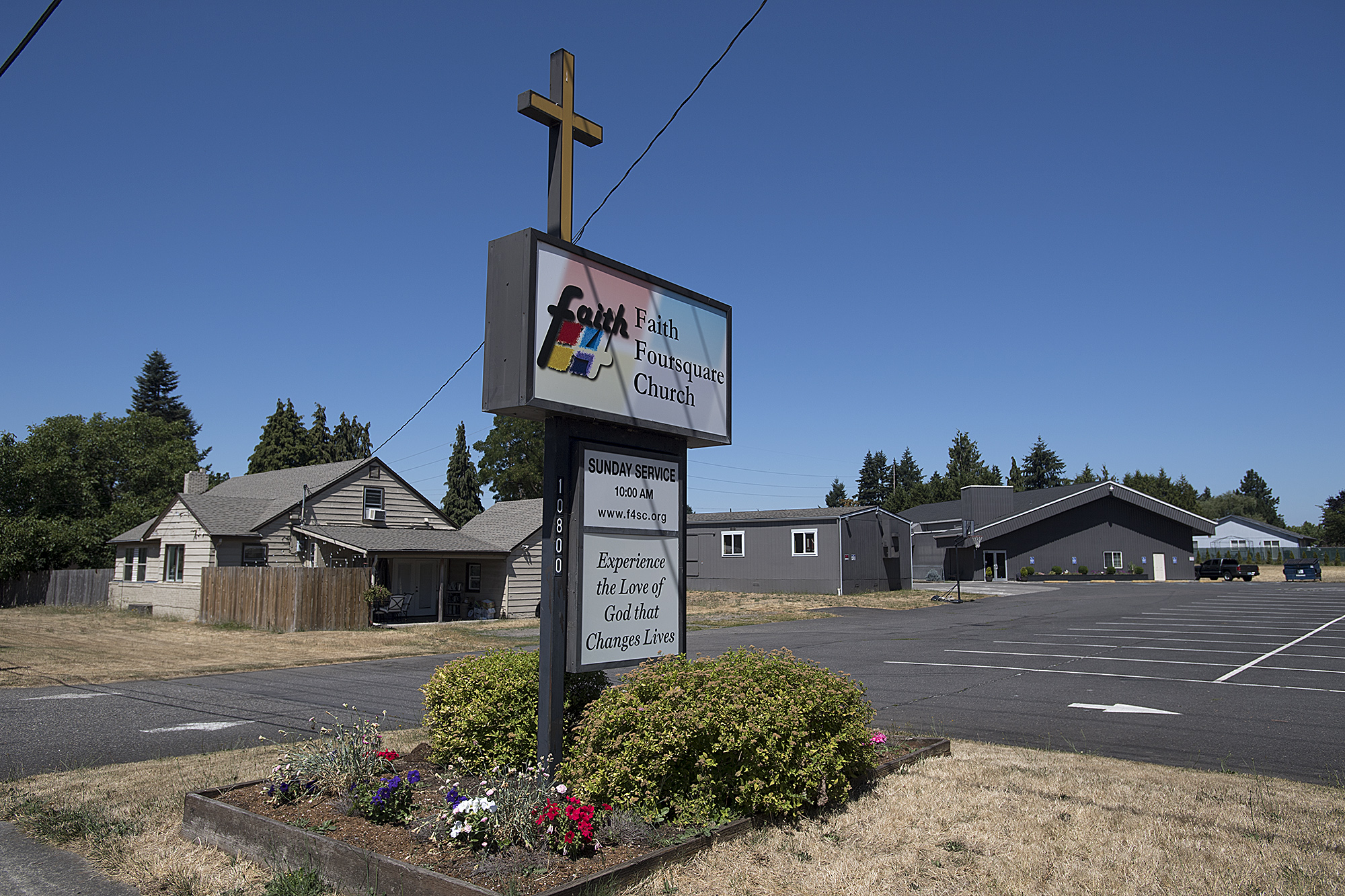
Amanda Cowan/The Columbian
Finding God
It was around that time that Bishop, then 20, started attending Crossroads Community Church with Michelle and her family. At the time, he attended for his wife. Up until then, Bishop didn’t see a need for religion in his life, he said.
“I never grew up going to church. I can’t ever remember a time going to church or knowing anything about God, Heaven or Hell,” Bishop said.
Although he and Michelle Bishop attended services regularly at Crossroads, he “didn’t really know God,” he said.
“I prayed the prayer for my wife but not for me. I had been exposed to church but not to Christ. … I confessed with my mouth but not in my heart,” he said.
The couple went on to have a son, David Bishop, named after his grandfather, two years later.
John Bishop joined the Air Force and served active duty from October 1983 to November 1986, according to the National Personnel Records Center. At the time, he was stationed at what was then McChord Air Force Base near Tacoma, he said, but moved back to Vancouver when he was released from active duty. He wrote in his book that he was also working on a bachelor’s degree and at two different businesses; at one point, he briefly worked as a garbage collector.
His life went on without him being a true believer of Christ. But that changed following a near-death martial arts fight.
Bishop was sparring with a guy he knew from high school during an unsanctioned event in a friend’s garage when the fight turned aggressive. He was kicked twice in the face, breaking his nose, and to Bishop’s surprise, severing a main artery. His wife drove him to the hospital after his nose wouldn’t stop bleeding; he passed out in the waiting room. He lost nearly five pints of blood, he said.
Bishop said hospital staff told him that if he was a religious person, he may want to call a priest to adminster last rites.
“I just had this fear I couldn’t describe. … I was 25 and going to die? Then what happens?” he said he questioned at the time.
Enlarge

The Columbian files
Neal Curtiss, who was pastor of the couple’s new church, Vancouver Community Church, came to pray with them at the hospital, Bishop wrote in his 2011 book “Dangerous Church.”
“Little did I know that God wasn’t going to give up on me. He wasn’t interested in bringing incremental changes to my life. Instead, he chose to use an event that would teach me that he loves me,” Bishop wrote in his book. “Looking back, I clearly see that my ‘accident’ that day was less accidental and far more purposeful than I ever could have imagined. God had a plan for me, a plan that was just beginning to unfold.”
Bishop started attending church again and worked closely with Curtiss, now 62.
“How do I grow up my whole life not knowing nothing about God?” Bishop said. “I just needed to know for me what’s really real. What is after this lifetime. … Is there Hell? Is there eternity? How does anyone know where they’re going to spend forever?”
The pastor asked him if he thought he would go to Heaven if he died.
“Without hesitating I said no. I knew the truth in my soul, and I wanted things to be different,” Bishop wrote in “Dangerous Church.” “So on that day — Oct. 4, 1988 — I asked Christ into my heart.”
As Bishop became more involved with the church, he felt a calling to share God’s message of love. He decided to enter seminary after finishing his undergraduate degree. Bishop obtained a Bachelor of Arts in business management from Saint Martin’s College and went on to attend Western Seminary. The same year, the Bishops welcomed a daughter named Kathryn. Four years later, Michelle Bishop gave birth to their third and final child, Hannah.
Enlarge
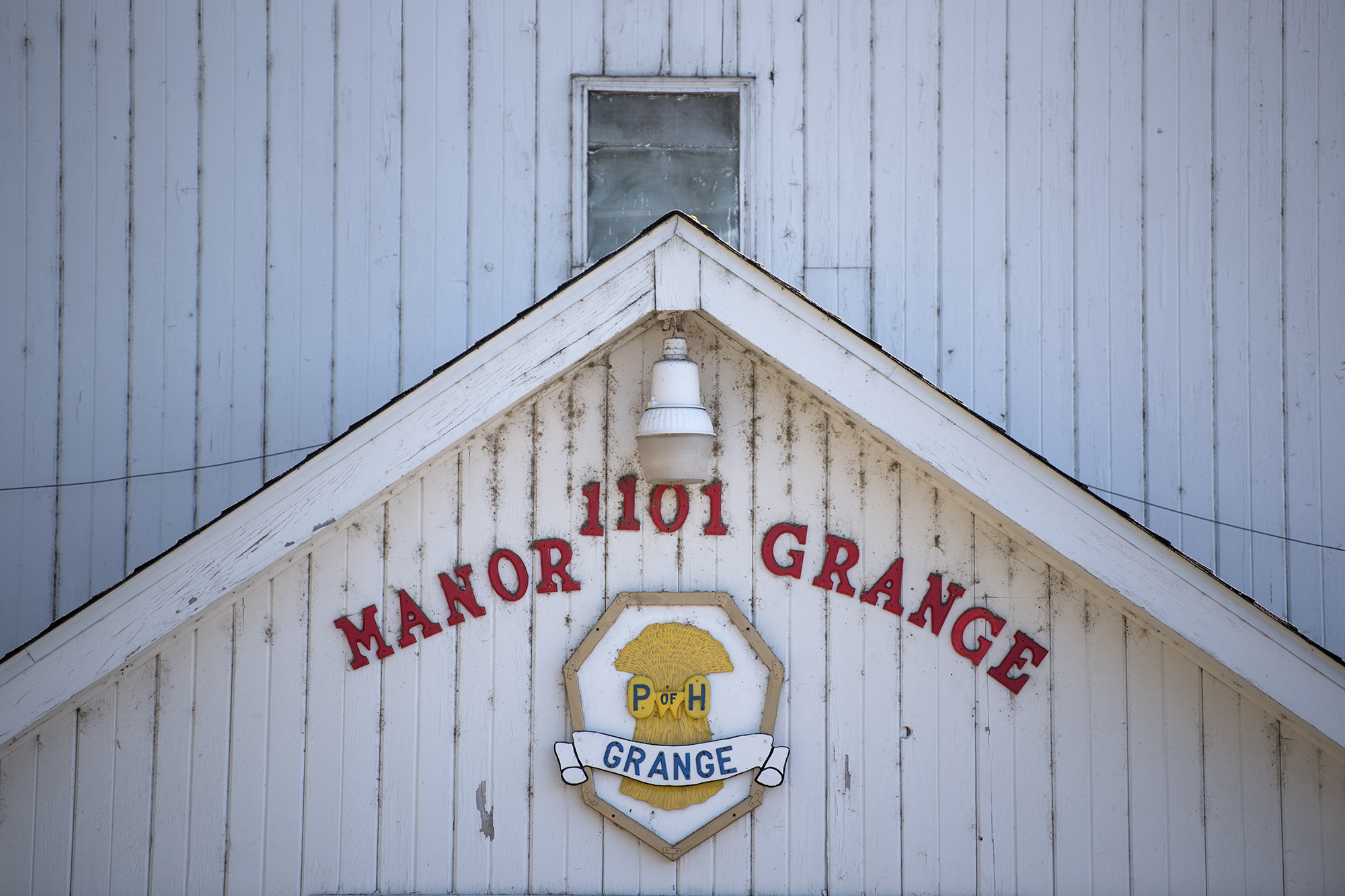
Alisha Jucevic/The Columbian
Living Hope
John Bishop and several friends from church started an evangelistic ministry called Focus One to share their message. They reached out to 400 churches in the area but got no reply, he wrote in “Dangerous Church.”
Instead, Curtiss let them hold a three-night crusade over Easter weekend, Bishop wrote in his book. And by the end of the final service, his grandfather came forward to receive Christ. It was at that moment, inspired by Pop, that Bishop decided he wanted to start a church for people who weren’t really about church.
“I just really felt like I needed to start a church. I didn’t really understand why,” Bishop said.
“We didn’t have a building, and we didn’t have a clue what we were doing,” he wrote in his book. “We were just convinced that lost people mattered to God, and I could look at my own life and the life of my grandfather as living proof that God can change hard hearts.”
Nine months later, on Nov. 3, 1996, five families — the Bishops, Clintons, Wilkersons, Warrens and Bosches — created Living Hope Church and held their first service at Manor Grange near Battle Ground, according to a blog post. It began with 44 congregants.
No one could have predicted the incredible events to come.
About this story
Today we offer the first of a six-part installment on the rise and fall of John Bishop, a Vancouver boy who grew up to achieve great success as a founder and senior pastor of Living Hope Church. His talent and charisma quickly built the church into what at its peak was perhaps Clark County’s largest cultural and spiritual influence.
But how did a man with Bishop’s great abilities lose his church, and potentially, his freedom?
In February, after writing a story about Bishop’s felony case, our courts reporter, Jessica Prokop, pitched the idea to team up with reporter Patty Hastings, who covers religion, to attempt to answer this question as completely as possible.
They spent the next seven months assembling hundreds of pages of public documents, combing through Bishop’s books and past interviews, conducting dozens of interviews, and structuring and writing their text. They ran across many people who didn’t want to talk about Bishop or the church, but enough others did. Bishop, who now lives in Yuma, Ariz., while awaiting sentencing, was initially reluctant to talk, so Hastings and Prokop pieced together his story from his books, previous interviews and an email exchange they had with him over the summer.
Then, on Thursday, he had a change of heart. Prokop talked with him by phone for more than three hours, confirming facts and adding what only he could tell us about his life.
Prokop and Hastings got the story. And, at approximately 12,000 words, it is one of the longest stories we’ve produced in my 20 years at The Columbian.
We offer it not to try to glamorize or demonize John Bishop, but to publicly explain for the first time what happened to him and his church, and to explore the life of one of Clark County’s most interesting and public people of this century.
— Craig Brown, editor
Fall from grace
Part 1: The making of a man of God
Part 2: The best show in town
Part 3: ‘Can’t have two tigers on the hill’
Part 4: Blue Light Special brings new crises
Part 5: Finding new paths